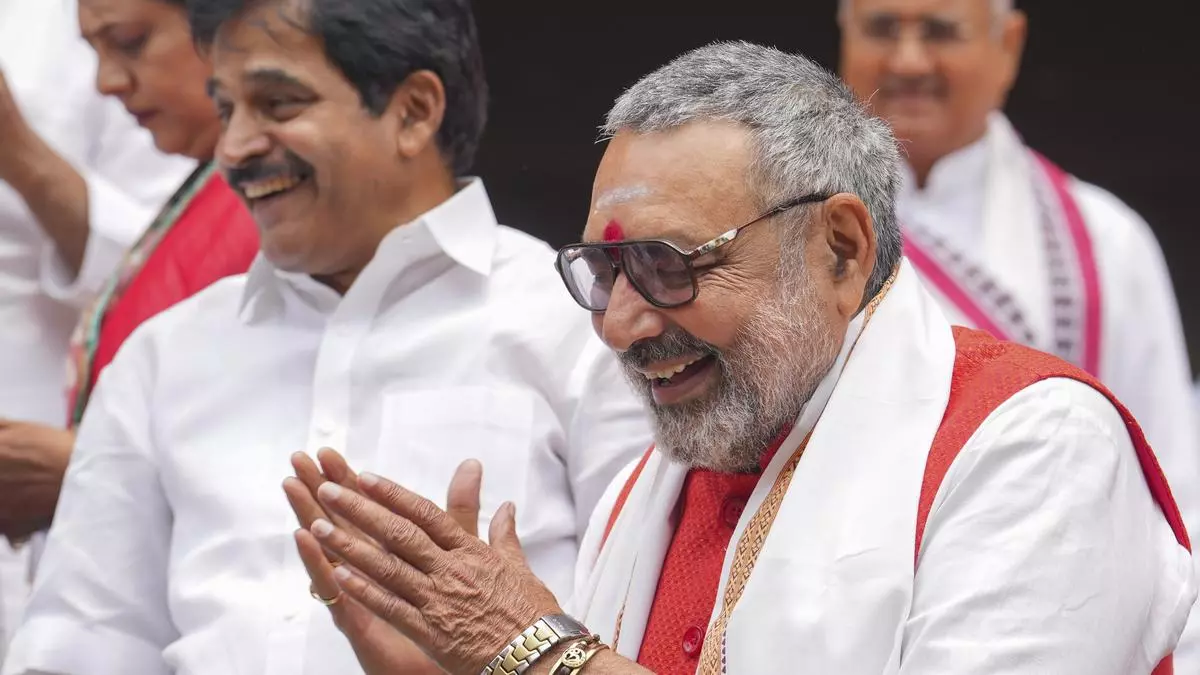Approval for new Bt cotton variety expected soon, says Textiles Minister Giriraj Singh
A new variety of technologically advanced Bt cotton likely to be allowed soon for commercial cultivation to help Indian textile industry in a bigger way, Textiles Minister Giriraj Singh has indicated. He also said that in order to overcome labour problem in this sector, efforts are on to utilise members of Self-Help Group (SHG) in a big way.
“Trial of HT (Herbicide Tolerance) Bt (also referred as BG III) cotton is going on. Upon completion of assessments by ICAR (Indian Council of Agriculture Research) and necessary approval is obtained, then its commercial cultivation can be permitted,” Singh told businessline. Such a variety could bring down the cost of production for farmers while also lead to bigger area coming under of cotton sowing and help the textile industry.
India approved the cultivation of Bt (technically known as Bollgard Bt Cotton or BG1) in 2002. Later two-gene Bt cotton (Bollgard II) was released for commercial cultivation in 2006. It was introduced in the country primarily as a crop protection technology to manage bollworms and reduce usage of insecticides. However, over a period of time, pink bollworm has been emerged as a major pest of Bt 2-gene cotton in all the cotton growing areas in the country due to development of resistance affecting the overall production in cotton. However, as government claims, effective implementation of strategies for pink bollworm management in cotton has seen an increase in production of cotton from 226.3 lakh bales in 2006-07 to 343.5 lakh bales in 2022-23. For 2023-24, projected production is 320.50 lakh bales.
Sectoral Growth
Singh said that higher and better quality of cotton production would be key for growth of the market for Indian textiles and apparel. As of now, the size is around $168 billon and with expected 10 per cent CAGR (Compounded Annual Growth Rate), it is estimated to reach $350 billion by 2030. Also, India is the world’s 3rd largest exporter of Textiles and Apparel. India ranks among the top five global exporters in several textile categories, with exports expected to reach $100 billion.
Utilisation of SHGs for Labour
Singh said that with these kinds of numbers, growth of textile sector also hinges on availability of labour. “10.2 crore members of Self-Help Groups all over the country can be good source of cheap labour and we are trying to make full use of that. Also, many brands have getting labour from these groups,” he said. Further, many States are taking initiatives to promote textile industry.
“States such as MP, UP, Bihar and Odisha have taken measures including labour subsidy and power subsidy. Then Bihar has adopted a model of plug and play,” Singh said. He also called for the adoption of the ‘hub and spoke’ model to enhance domestic manufacturing, encouraged industry collaboration and underscored the importance of establishing Indian brands. The Ministry is also poised to revive the Scheme for Integrated Textile Parks (SITP) to create internationally standardised parks.
The Minister rejected the theory of threat from Bangladesh. “My challenge is not Bangladesh. I would like to take ahead of China in time to come. Bangladesh water and raw material charges are going high,” he said.
